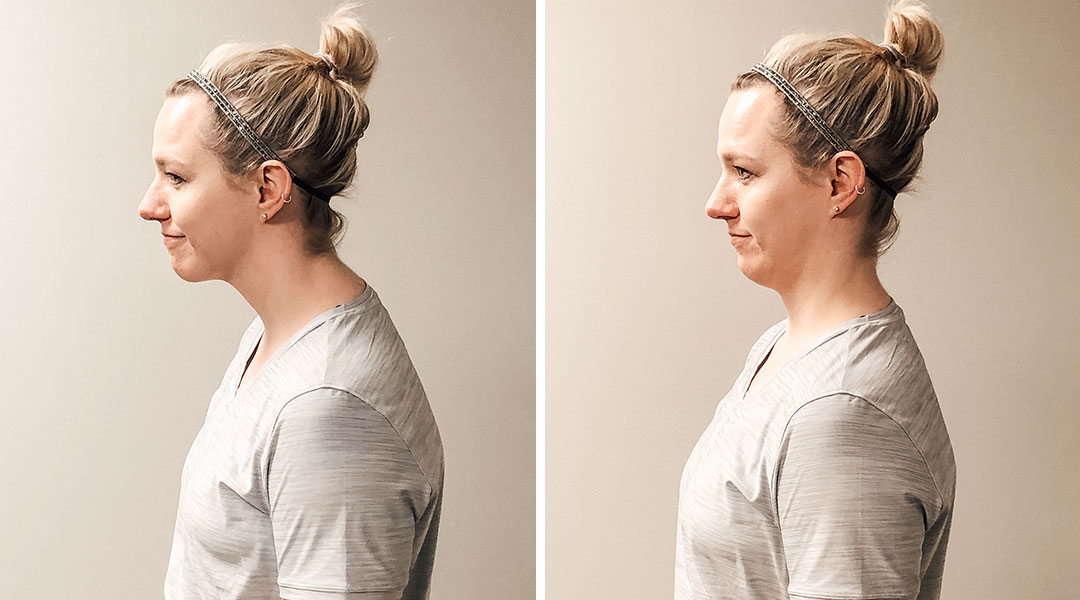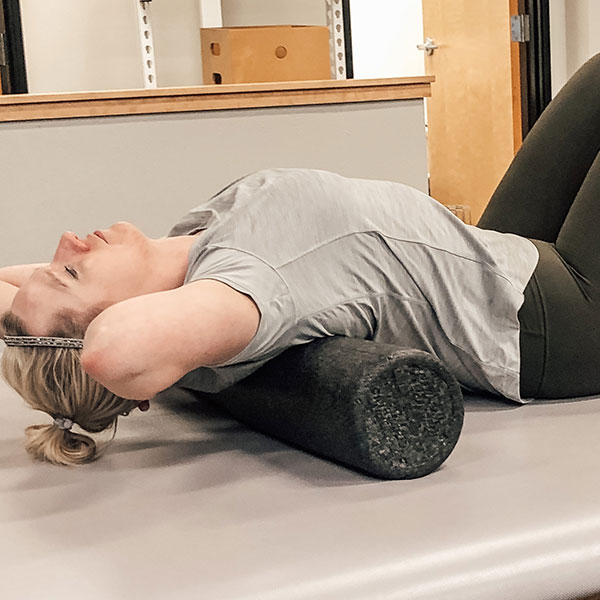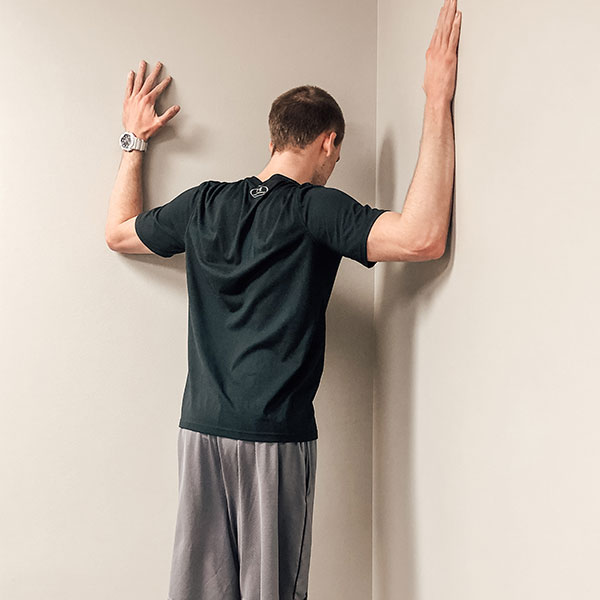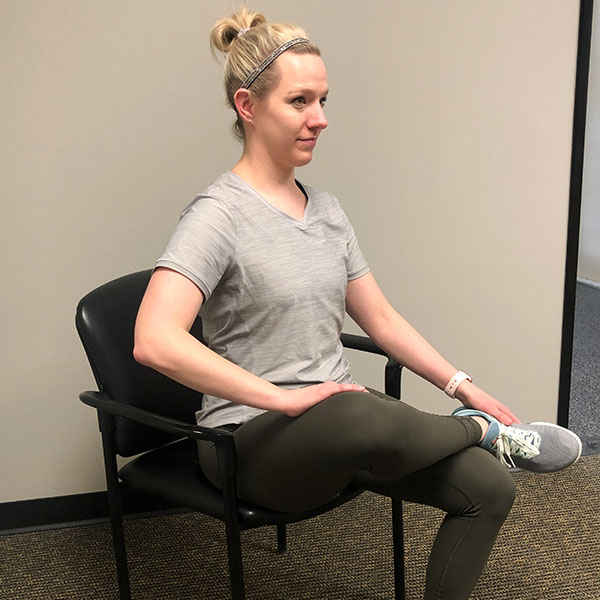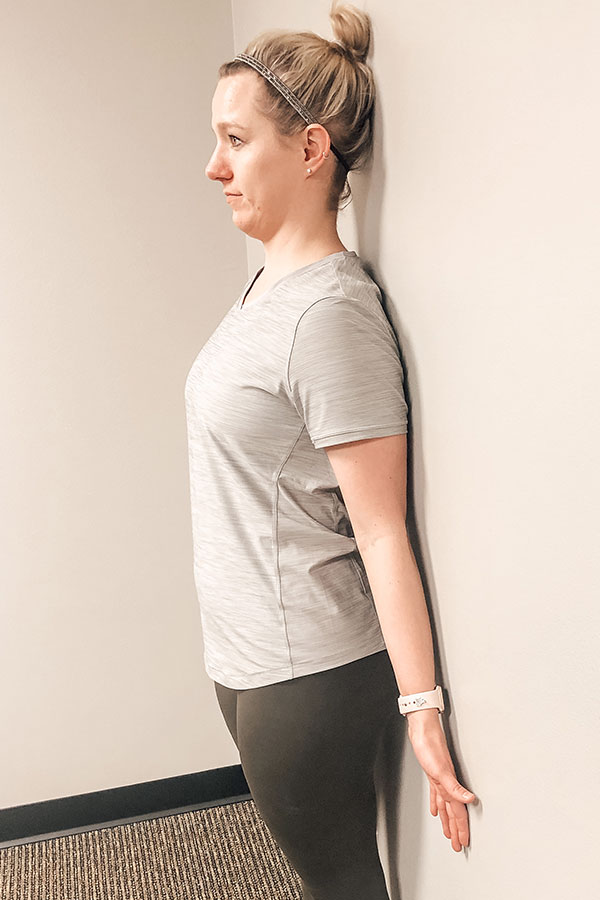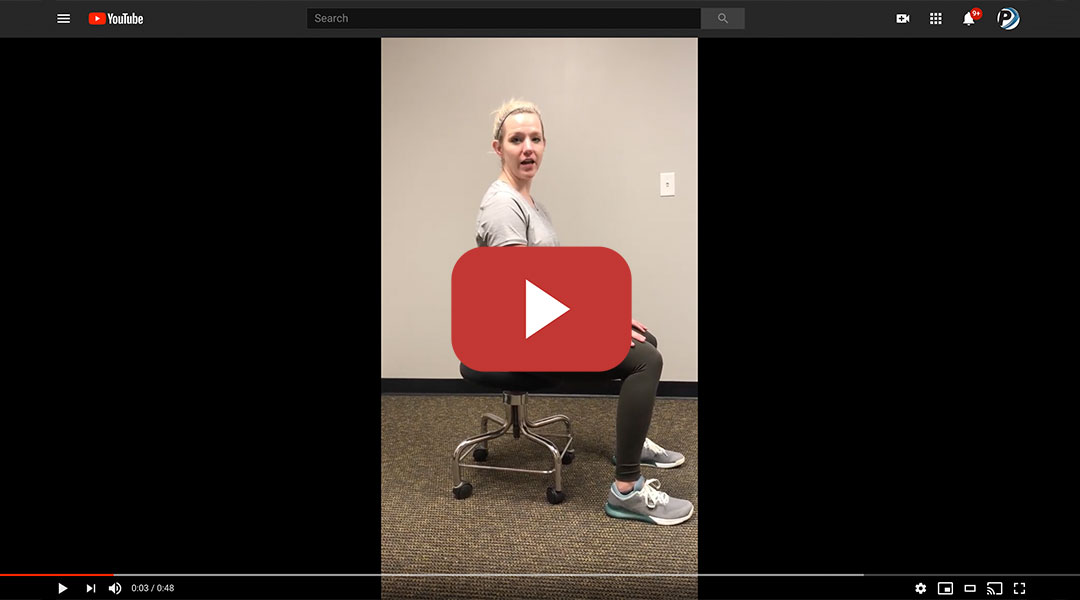Adjustments & Stretches to Alleviate “Working from Home” Pain
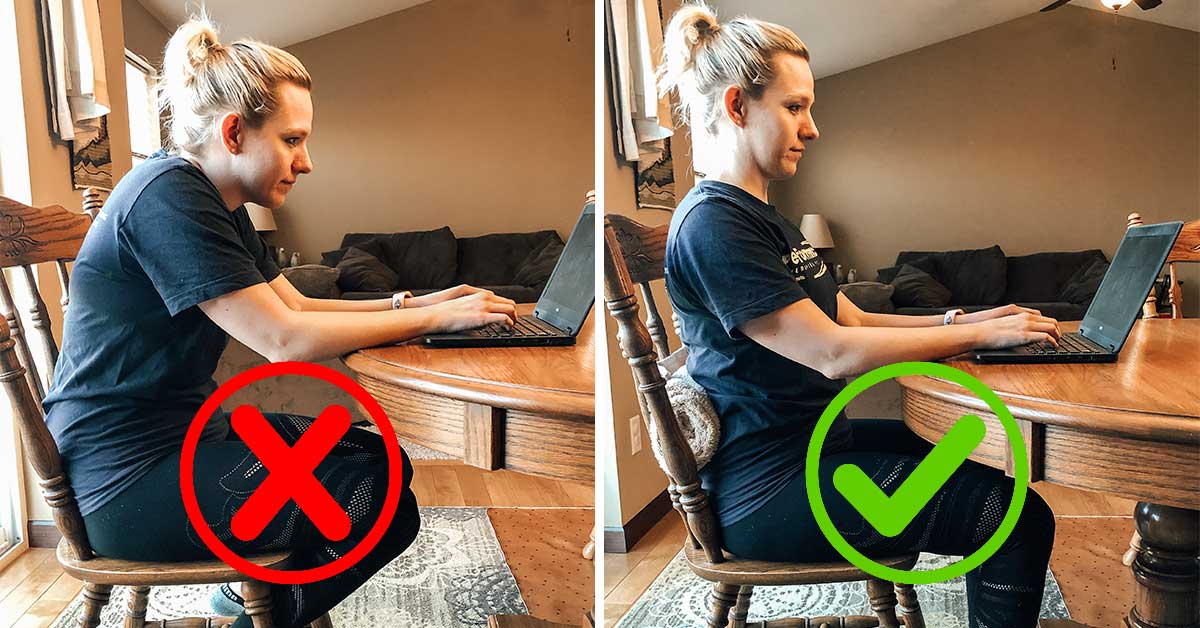
Originally published on April 7, 2020. Updated October 30, 2020.
As we have all been practicing social distancing in the recent weeks, you may have found yourself working or taking classes from home.
Have you also noticed that your neck or back is a little sore? Are you experiencing more headaches than usual?
Some of these pains may be due to changes in your posture as you have transitioned from the work station in your office to working at home. Maybe you’re spending more time sitting with your computer on the couch rather than sitting at a desk. Maybe you have been sitting on a barstool at your kitchen counter. Maybe it’s easiest for you to sit in your bed or on the floor while you complete your work tasks. These changes in sitting posture and activity levels affect your body and the way that it functions.
The good news is, there are many easy adjustments you can make to your work station at home to avoid or decrease these mechanical stresses on your body from poor posture. Here are a few positioning changes to try:
- Avoid sitting/laying on your couch or in your bed with your computer
- Sit at a desk or table, if possible
- Use a comfortable chair that will allow you to sit with good posture (photo)
- Head right above shoulders and hips
- Adequate lumbar support (chair with support, small pillow or towel roll)
- Arms not too high or low
- Feet supported on ground or footstool
- Try to sit evenly and not lean on one side
- Knees at the same height or slightly lower than hips
- Forearms and thighs parallel to the floor
- Elbows approximately 90 degrees
- Position your head approximately an arm’s length away from the screen
- Keep the keyboard and mouse close to each other to avoid reaching
- Avoid sitting longer than an hour at a time, taking a break of about 10 minutes per hour of sitting
- Use a hands-free device for long phone calls to avoid straining your neck
In addition to making changes in your work station positioning, you may also want to add a few simple exercises to help keep your body limber and strong.
Here are some exercises to try:
Chin Tucks
- Move head straight back so that your ears are in line with your shoulders
- Keep chin down and think of achieving height through the crown of your head
- Hold for 10 seconds, repeat 10 times
Thoracic Extension
- Lay down over a foam roller or towel roll at the upper back as shown
- Hold the position up to one minute
Corner Pec Stretch
- Place forearms on the walls in a corner with elbows around shoulder height
- Place one foot in front of the other and bend your front knee, bringing your body closer to the corner
- Hold the stretch for 20-30 seconds, repeat
- Alternatively, you can also perform this stretch in a doorway
Seated Pelvic Tilts
WATCH THE VIDEO DEMONSTRATION HERE >>
- While sitting, place hands on hip bones
- Tilt your pelvis forward by arching your low back, tipping the front of your pelvis forward and down within a comfortable range
- Tilt your pelvis backward by tucking your tailbone, tipping the front of your pelvis backward, again within a comfortable range
Figure-4 Hip Stretch
- While sitting with feet on the floor, bring one leg up, placing your ankle on the opposite knee/thigh
- Gently press your knee down, bringing it closer to the ground
- Hold for 20-30 seconds, perform two repetitions, repeat on other side
Seated Heel/Toe Raises
- While sitting with feet on the floor, raise heels off the floor, then back down
- Then, raise your toes off the floor, then back down
- Repeat 10-20 times
Wall Posture Exercise
- Stand up against a wall, making contact on the wall with your heels, buttocks, upper back/shoulders, and the back of your head
- Keep chin tuck position and shoulders back
- Maintain a neutral spine position
- Hold this position up to one minute, repeat
Posture Drill
WATCH THE VIDEO DEMONSTRATION HERE >>
- Begin seated in a chair in your normal posture
- Bring head as far forward as you can, then as far back as you can. Settle head in the middle of those two extremes
- Move shoulders as far forward as you can, then up towards your ears, then back as far as you can, then relax in the middle
- Slouch your low back, then sit up as straight as you can with your chest out, then relax in the middle
- At the end, you should be in a neutral spine posture
Cardiovascular Exercise
Prolonged sitting, even with good posture, isn’t the best for your body. Taking regular breaks throughout your day to walk or by performing other cardiovascular exercises can be beneficial not only in decreasing mechanical stressors on your body but also benefit your mental well-being. This is a strange time for all of us. Don’t underestimate the power on some exercise-induced endorphins for improving your mental state.
You may find that even with making all of these changes, you are still having pain or discomfort. If that is the case, we would encourage you to make an appointment with a physical therapist at Performance Therapies. In physical therapy, we can perform manual techniques to improve joint and soft tissue mobility that may be inhibiting your movement. We can prescribe additional exercises to help improve your range of motion and strength.
///
NEW SERVICE AT PERFORMANCE THERAPIES
Sign up for a Virtual Home Workstation Assessments with one of our ergonomic experts. We will look at photos and videos of your current workstation and offer suggestions to improve body alignment to reduce stress and strain on your body.
